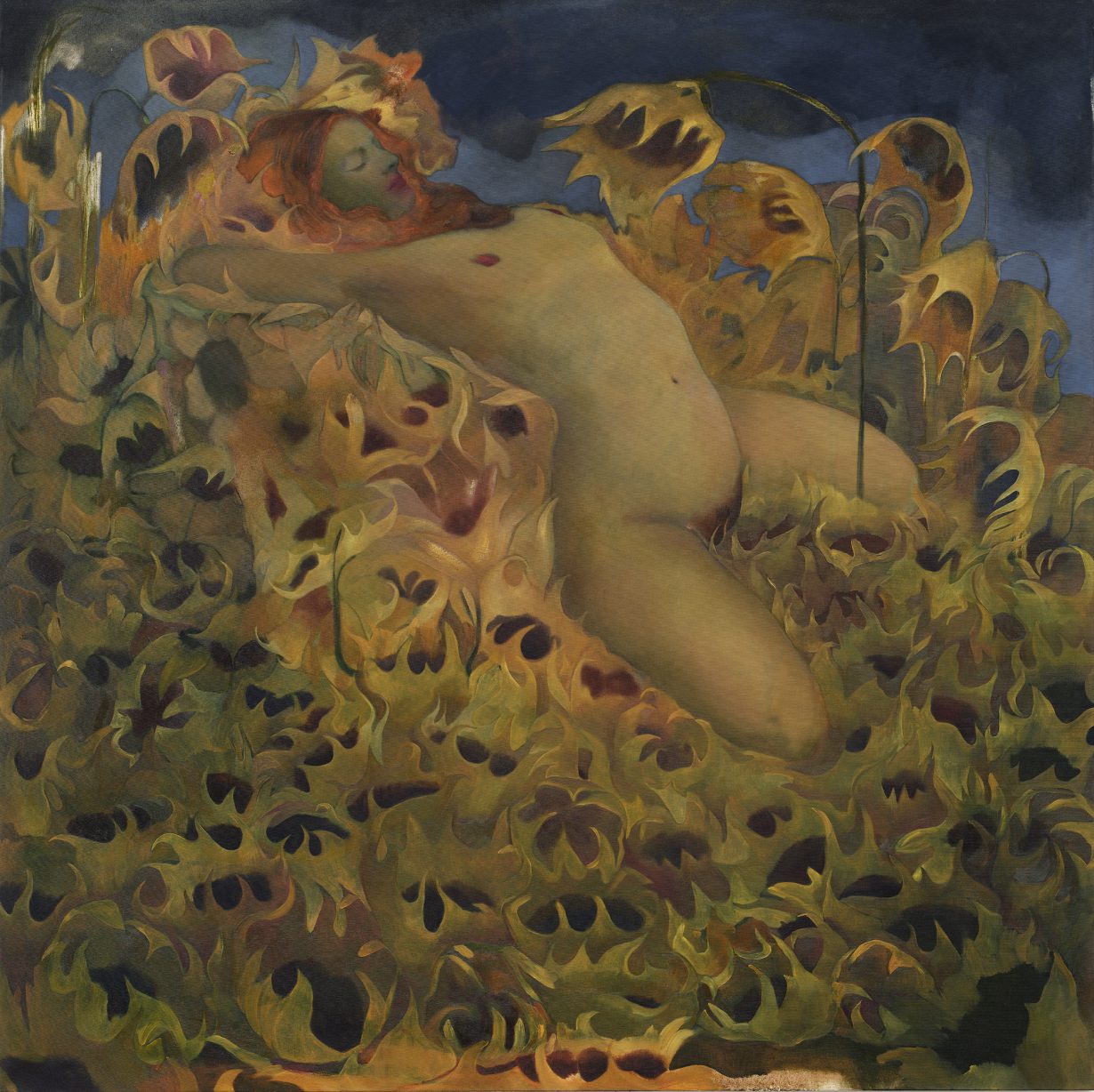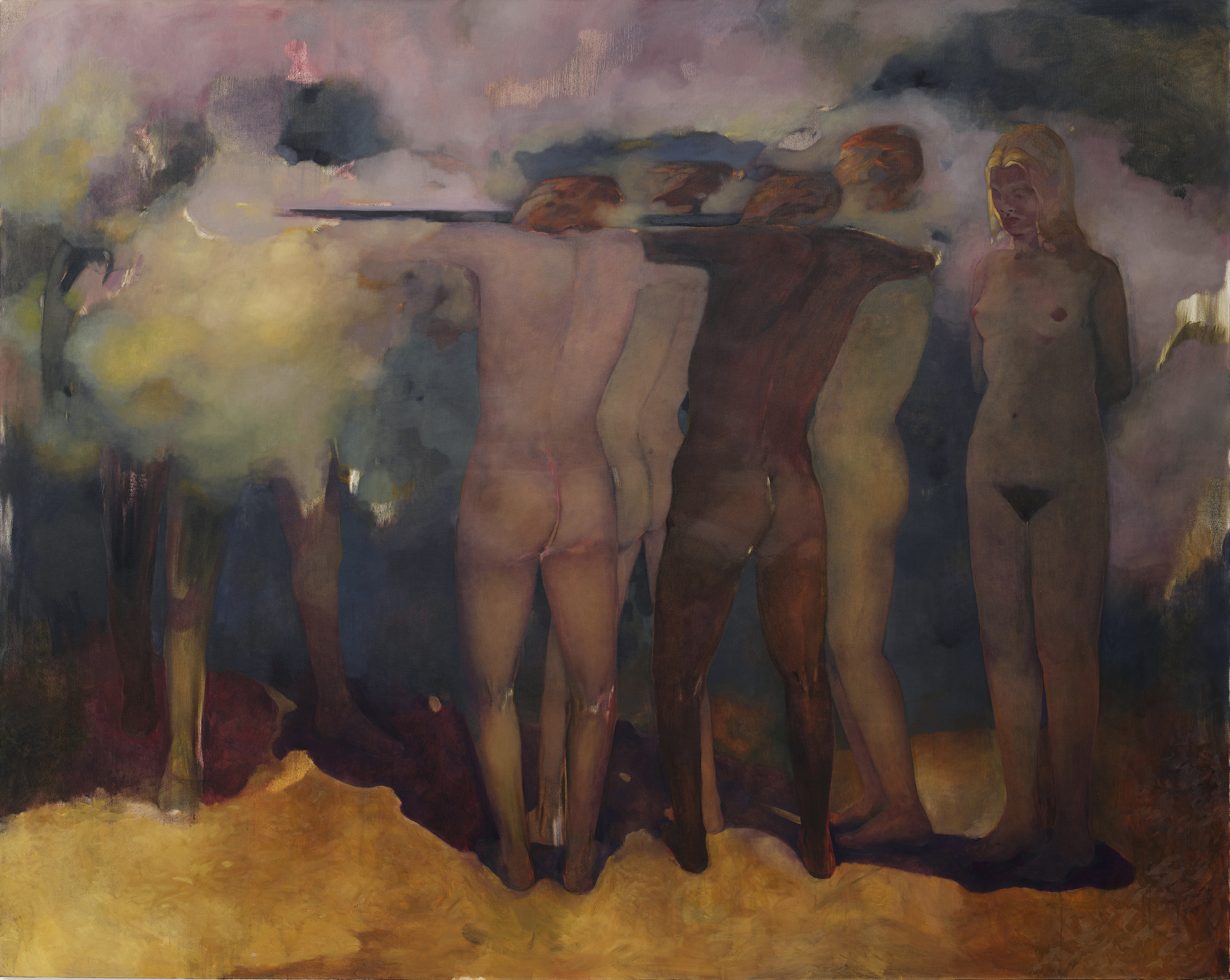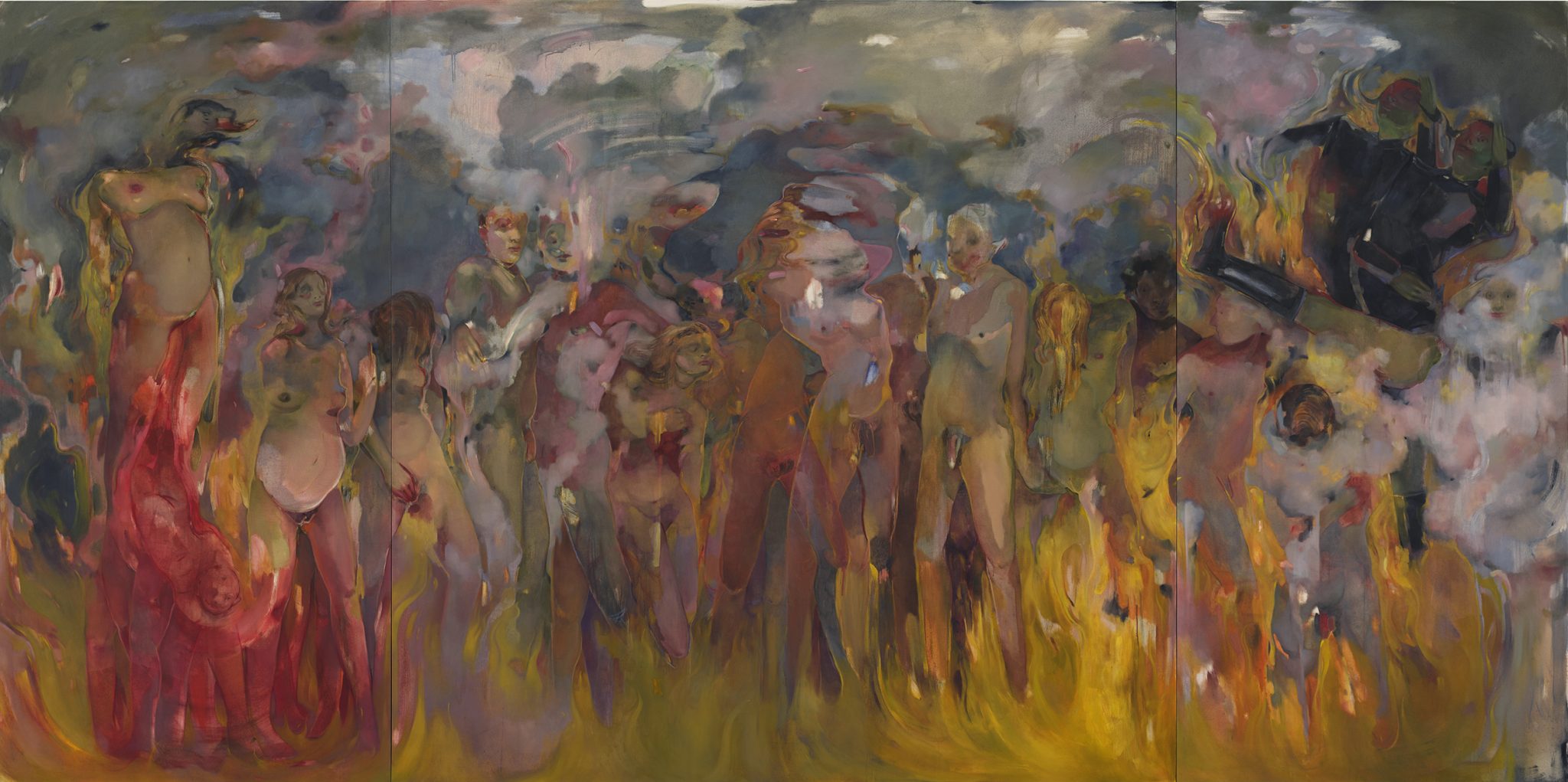The Danish artist upends traditional representations of the female nude and transforms them into something darker
Eva Helene Pade has a taste for the theatrical: these ten paintings by the young Danish artist feel like the scenes of a play or some grand narrative dance. In fact, this sensual appraisal of human experience, through gossamer layers of oil paint, is inspired by moments from Igor Stravinsky’s The Rite of Spring. The ballet, first performed in 1913, conjures the ancient rites of Russian folklore, including the sacrifice of a virgin who dances herself to death. In particular, Pade’s paintings appear to draw on the unbridled physicality of Pina Bausch’s staging of The Rite of Spring, first performed in 1975, when the dancers of the Tanztheater Wuppertal writhed in wet soil. The golden shroud that engulfs Pade’s painted bodies, in turn, reimagines the soil coating the dancers as burning light (Offerdansen [V] and [H], both 2024). Just as Bausch translates the impassioned stories of The Rite of Spring into movement, so Pade captures the ballet’s emotional potency in paint.
The opening works in the series see the sacrificial virgin transformed: she is the archetype of budding sexuality here, back arched and eyes closed, encircled by sunflowers (Jordens tilbedelse [V] and [H], both 2025). These are framed by two shadowy scenes in which the maiden is joined by a throng of nudes (Bortførelsens leg [V] and [H], both 2024). Stravinsky’s pounding score and dissonant chords here seemingly meet the restless beat of a modern nightclub, as we find ourselves on a spotlit dancefloor. Further into the sequence, we are met by two solemn groups in black suits and red gloves (Hyldest til den udvalgte [V] and [H], both 2024). Are these ushers onstage or mourners at the grave? Or are their hands drenched in blood? The guilty seem to accept their fate in the next painting, Forfædrenes ritual (2024–25), where a blonde woman oversees an execution.


The latter composition is undeniably influenced by Édouard Manet’s The Execution of Emperor Maximilian (1867–69), and Pade’s effortless ability to quote from art history pervades her work. The golden haze recalls Symbolist paintings by Gustav Klimt and Gustave Moreau, while the appearance of the body challenges traditional representations of the female nude. Crucially, she depicts the figure as more than just a vessel for ecstasy and violence. Bausch ushers Pade towards this more complex understanding of sacrifice, and more specifically, female sacrifice. Pade reclaims the passive female muse here and turns her into something more elemental, borrowing from different eras, disciplines and styles of dance along the way. Buried in sunflowers or dissolved into light, the virgin now appears aligned with cyclical forces of life, death and renewal. In the final, triumphal canvas, Forårsofret (2024), The Rite of Spring reaches its frenzied climax and bodies convulse into one another, disintegrating into flaming soil and diaphanous clouds.
Pade’s grasp of colour and scale is stunning. A crimson stain on the left, where a baby falls from its mother’s womb, echoes the red dress of the sacrificial victim. And yet she is most formidable when turning from performative theatrics and the specifics of The Rite of Spring (like the literal stage that occupies some of these paintings) to those, such as the hazy Forårsofret, that speak more closely to the primal human emotion of the dance in all its tragedy and beauty.
Forårsofret (The Rite of Spring) at ARKEN Museum of Contemporary Art, Ishøj, through 31 August
From the Summer 2025 issue of ArtReview – get your copy.
